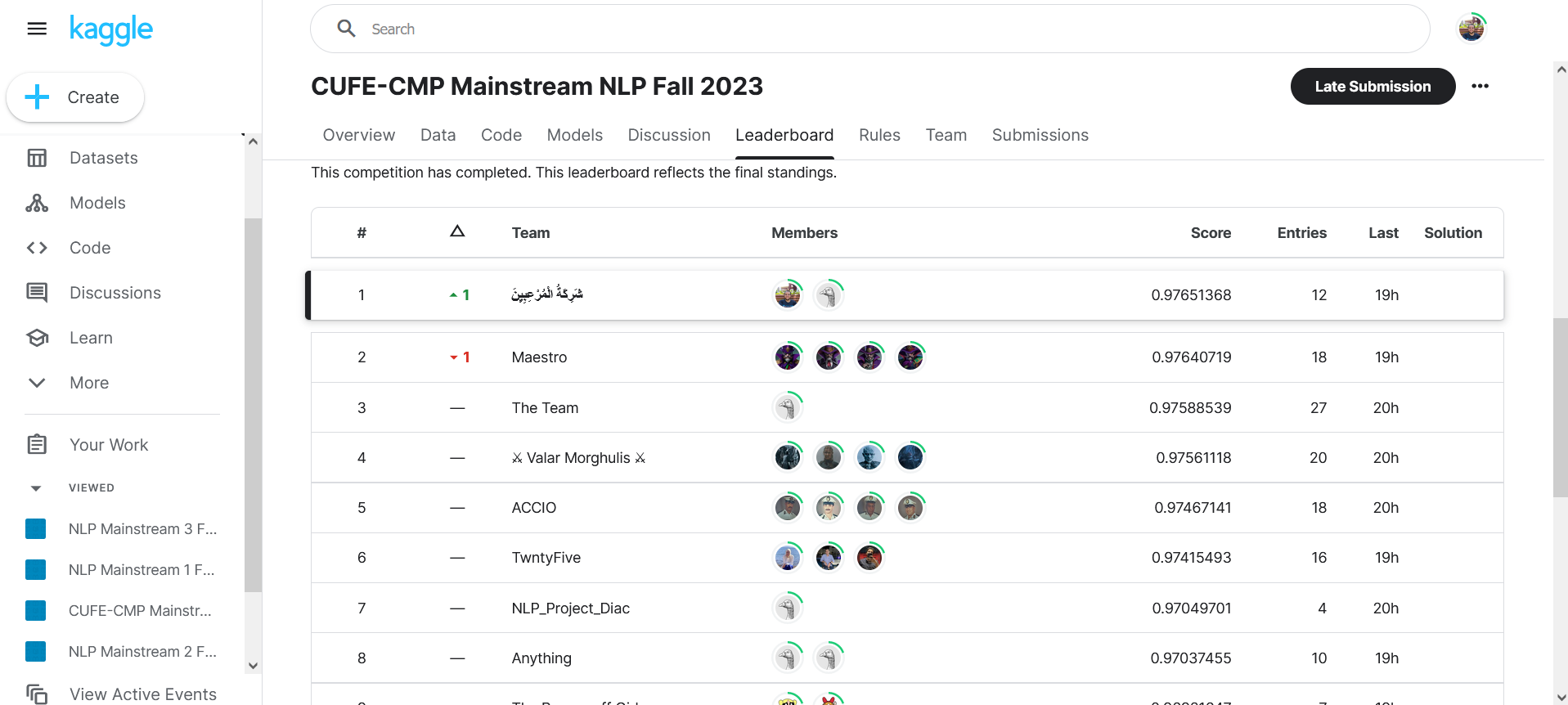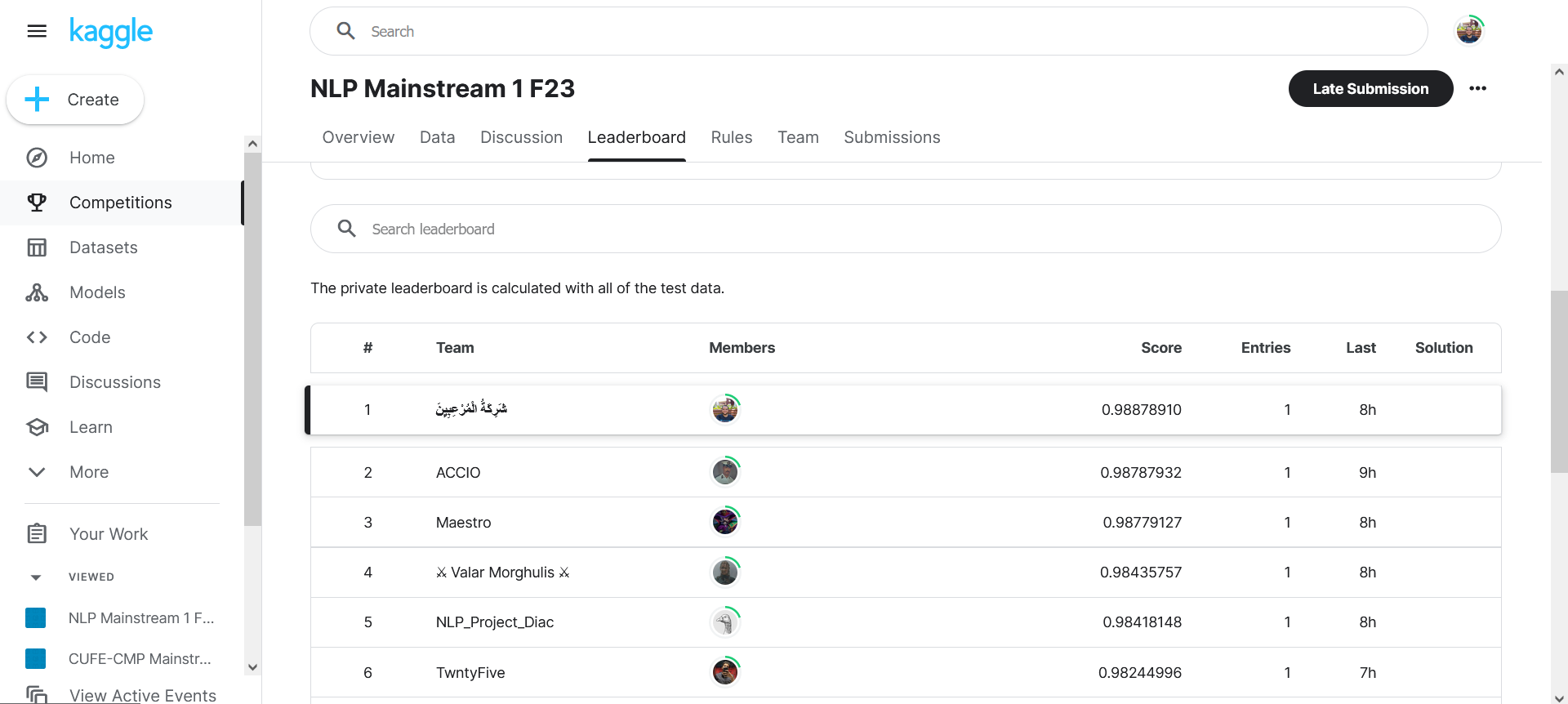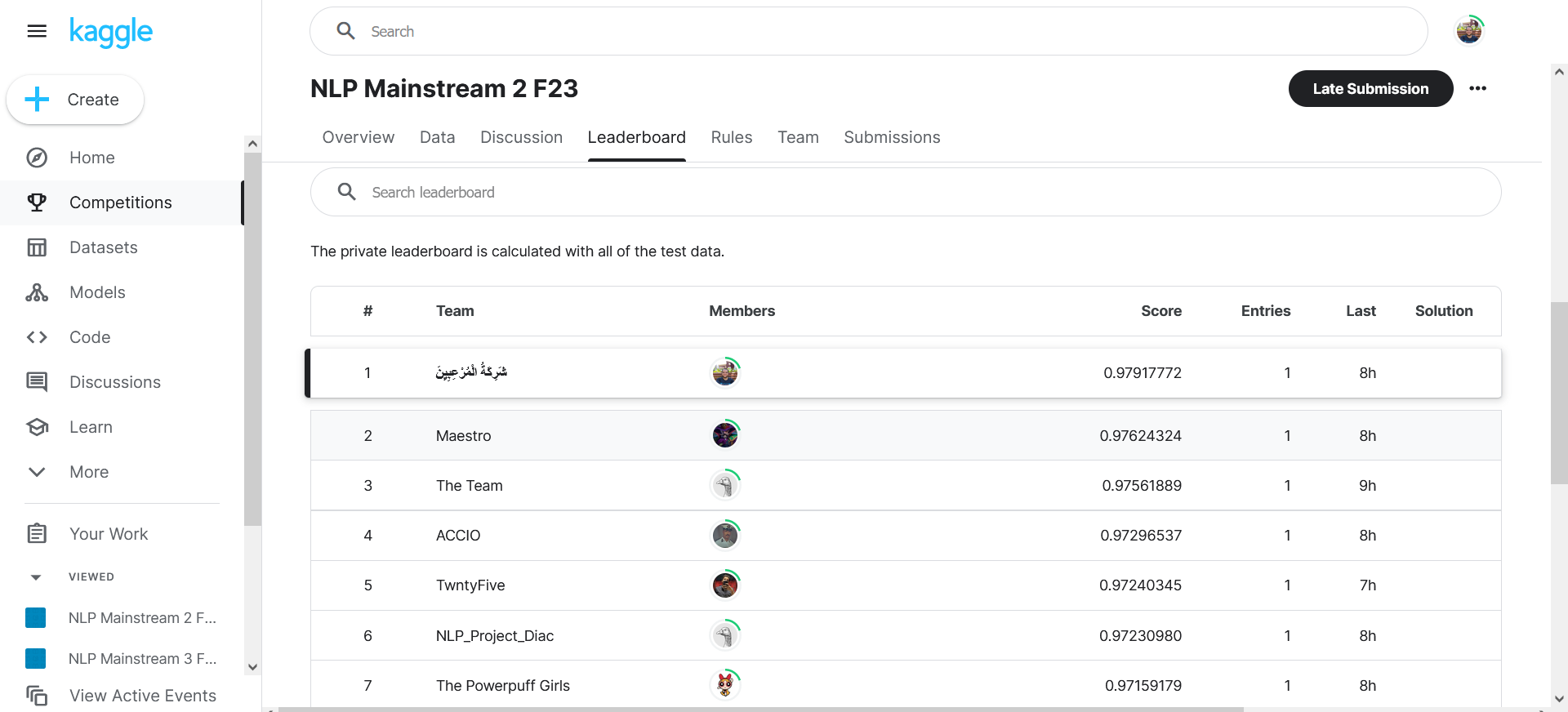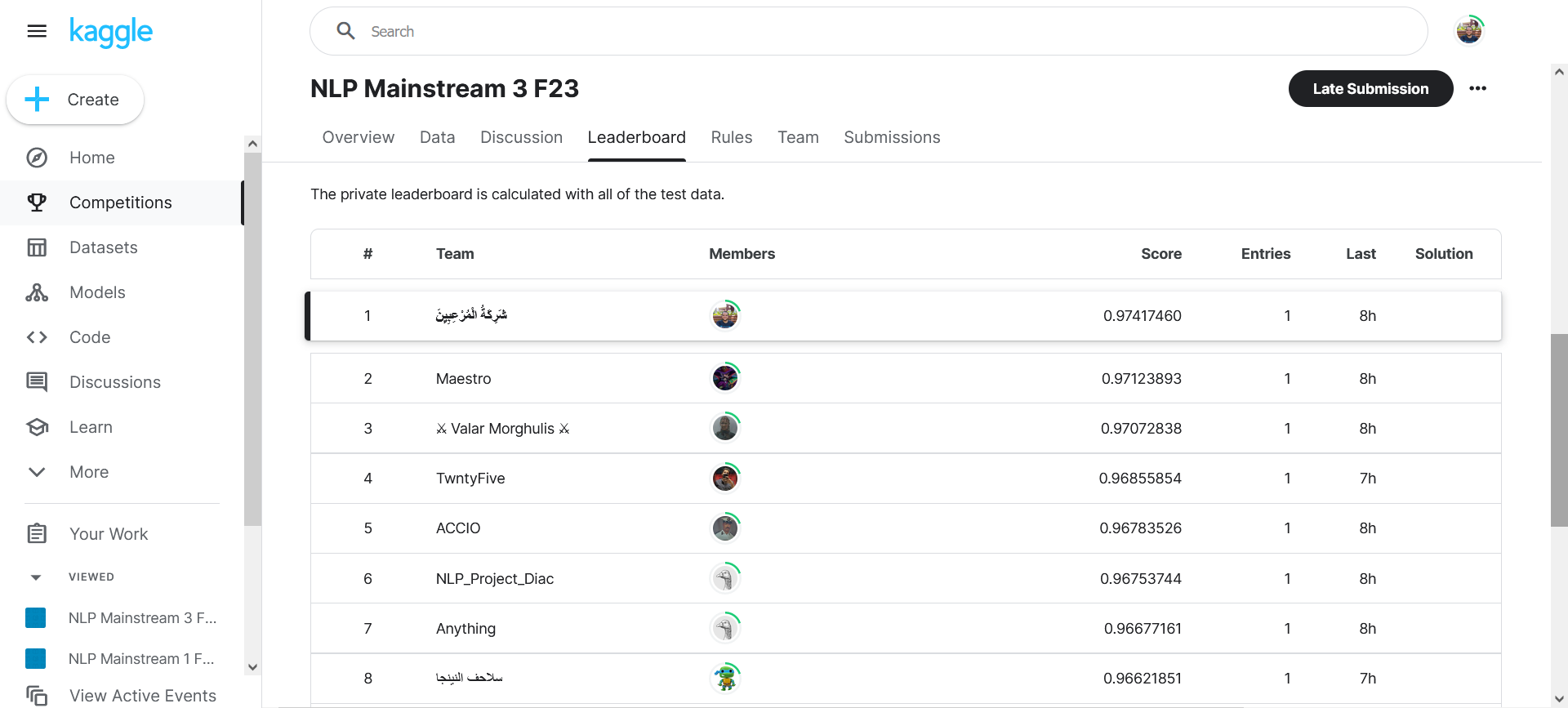This competition project is focused on the task of Arabic Text Diacritization. It uses state-of-the-art Natural Language Processing (NLP) techniques to add diacritical marks to Arabic text. These marks are crucial for correctly interpreting and pronouncing Arabic words. The project includes a comprehensive pipeline for preprocessing the text, training the diacritization model, and testing its accuracy on test set.
This project implements a BiLSTM (Bidirectional Long Short-Term Memory) model for diacritic restoration in Arabic text. The goal is to predict diacritics for each character in a given text.
One could consider it as a classification problem on char-level with 14 classes (no diacritics, fath, damm, ...).
- The code includes several functions for cleaning and preprocessing the input text data. These functions perform tasks such as removing unwanted characters, diacritics, and normalizing the text.
- The preprocessing involves replacing or removing specific patterns using regular expressions, cleaning unwanted characters, and handling diacritics.
- The code tokenizes the cleaned data into sentences without cutting words.
- It loads the data, cleans it, and saves it to files. Then, it tokenizes the data and converts it to indices using character-to-index mapping.
- Data loaders are created using PyTorch's DataLoader to facilitate batch processing during training.
- The code uses PyTorch Embedding to embed Arabic characters as a first layer in the used Bi-LSTM network.
- The main model in the code is a character-level Bidirectional Long Short-Term Memory (BiLSTM) network, implemented as the CharLSTM class.
- The model consists of an embedding layer, a bidirectional LSTM layer, batch normalization, and an output layer.
- The LSTM layer is designed to capture contextual information from both forward and backward directions.
- Batch normalization is applied to normalize hidden states.
- The output layer produces predictions for diacritic labels.
- The training loop iterates through epochs, batches, and sequences to train the model.
- CrossEntropyLoss is used as the loss function, and Adam optimizer is employed for parameter updates.
- The learning rate is adjusted with a scheduler during training.
- The code includes training and validation phases, tracking loss and accuracy (on training set, and validation set).
- The code includes a function (predict_test) to load a pre-trained model and generate submission.csv file with diacritic index for every char.
- There's a function (predict_single_sentence) to predict the diacritics for a sentence and return it as diacritized.
- We have achieved average accuracy of 97.78% using multiple test sets.
- Here is a demo to diacritize a single sentence:

- A competition was held by our college on Kaggle, with 4 different test sets, with 20 competing teams.
- Our team (شَرِكَةُ الْمُرْعِبِيِنَ) has achieved the first position at all the 4 competitions!
- First competition:

- Second competition:

- Third competition:

- Fourth competition:





